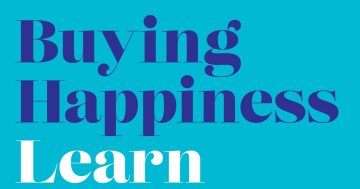Renu Prasad* says there is an alarming gap between the level of financial education we should all possess and that which we actually possess.

Photo: Black Ice
Welcome to our new quiz show, where everyday Australians have a chance to pit their wits against the average American.
Today’s topic is money management, and you’re in the hot seat.
Here’s your first question: You have $100 in your savings account.
This money is earning 2 per cent interest.
How much will you have after five years?
Exactly $102, more than $102 or less than $102?
Tick tock.
Now here’s your second question: Imagine that the interest rate on your savings account was 1 per cent per year and inflation was 2 per cent per year.
After one year, would you be able to buy more, exactly the same, or less than what you can today with the money in this account?
Lock it in, Eddie.
These are real questions posed in a survey of consumers aged over 50 years in the United States, conducted by researchers at the University of Michigan.
The study highlighted an alarming gap between the level of financial education that we should all possess and that which we actually possess.
In fact, less than 50 per cent of respondents were able to answer both of these questions correctly.
It’s called “financial literacy”, which is a fancy term describing how savvy we are about money.
Financial literacy is about understanding the optimum way to save money, the smartest way to invest money and the best way to get value from your hard-earned dollars.
And, most importantly, it’s about managing your finances in a way that doesn’t end in a whopping debt, financial stress and threatening letters in your mailbox from collection agencies.
According to a study by research house Standard & Poor’s, Australians rank ninth globally for financial literacy, ahead of the United States at fourteenth.
However, the financial literacy gap between the richest and poorest Australians is the largest of its kind in the world and only half of our poorest households were classified as financially literate.
But why does it matter?
A University of Melbourne study recently found that people with lower levels of financial literacy are less likely to put money into savings, less likely to pay off their credit card debt and less likely to be able to cover an emergency cost.
Lack of financial literacy also leads to more workplace stress, which in turn can lead to poor morale and absenteeism.
In short, a lack of financial literacy means that you are less likely to save and more likely to make purchases on credit.
And when you do buy on credit or borrow money, you’re more likely to choose a product that charges more interest than what you need to.
Result: you get into debt and you stay there longer.
To help understand the problem, it’s worth considering practical examples of financial literacy in action.
Imagine you have borrowed $2,000 from the bank.
Would you prefer to pay $900 interest on that loan, or $3,000 interest?
It may seem like a no-brainer, but many Australians unwittingly end up opting for the higher amount because they’ve chosen to make the minimum repayments.
Paying the minimum may seem like an attractive short-term option, but a little financial literacy shows us that it’s a very bad deal in the long run — in fact, many people end up repaying a small loan over 25 years.
The same principle applies to all of your financial decisions.
Would you pay up to $1,500 for the privilege of applying for a home loan, when you could apply for an alternative product that didn’t require this fee?
Would you pay an account keeping fee of $100 a year or up to $1,000 a year for a credit card when there are alternative products that do not charge these fees?
These are all common money management mistakes in Australia and they are all entirely avoidable if we understand the perils of minimum monthly credit card repayments and shopped around for the best possible deal.
Improving our financial literacy means fewer and lower bank fees and more cash to spend on yourself and your family.
By reading this article, you’re already well on your way to enhancing your financial literacy.
Oh, and if you were wondering about our examples at the start of this article, 2 per cent interest on $100 over five years will result in more than $102 and 2 per cent inflation will decrease your spending power.
Rocket science? Probably not.
But it’s the simple lessons of financial literacy that usually get overlooked and, collectively, they’re one of the biggest contributing factors to successful wealth management (especially if maths wasn’t your favourite subject at school).
Now, where’s that calculator?
* Renu Prasad is a contributor to Your Money.
This article first appeared at www.yourmoney.com.au.











